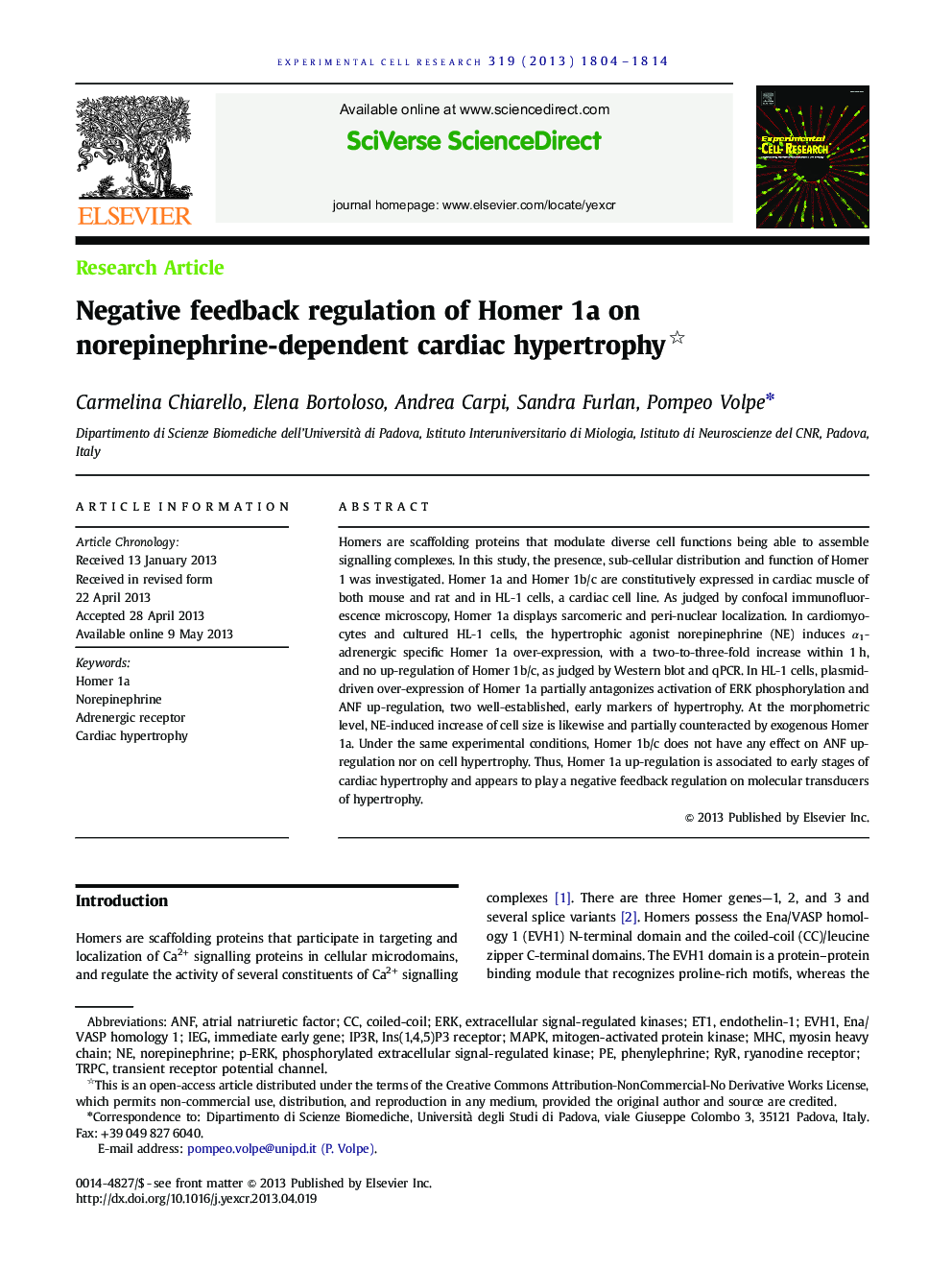| Article ID | Journal | Published Year | Pages | File Type |
|---|---|---|---|---|
| 10904252 | Experimental Cell Research | 2013 | 11 Pages |
Abstract
Homers are scaffolding proteins that modulate diverse cell functions being able to assemble signalling complexes. In this study, the presence, sub-cellular distribution and function of Homer 1 was investigated. Homer 1a and Homer 1b/c are constitutively expressed in cardiac muscle of both mouse and rat and in HL-1 cells, a cardiac cell line. As judged by confocal immunofluorescence microscopy, Homer 1a displays sarcomeric and peri-nuclear localization. In cardiomyocytes and cultured HL-1 cells, the hypertrophic agonist norepinephrine (NE) induces α1-adrenergic specific Homer 1a over-expression, with a two-to-three-fold increase within 1 h, and no up-regulation of Homer 1b/c, as judged by Western blot and qPCR. In HL-1 cells, plasmid-driven over-expression of Homer 1a partially antagonizes activation of ERK phosphorylation and ANF up-regulation, two well-established, early markers of hypertrophy. At the morphometric level, NE-induced increase of cell size is likewise and partially counteracted by exogenous Homer 1a. Under the same experimental conditions, Homer 1b/c does not have any effect on ANF up-regulation nor on cell hypertrophy. Thus, Homer 1a up-regulation is associated to early stages of cardiac hypertrophy and appears to play a negative feedback regulation on molecular transducers of hypertrophy.
Keywords
Related Topics
Life Sciences
Biochemistry, Genetics and Molecular Biology
Cancer Research
Authors
Carmelina Chiarello, Elena Bortoloso, Andrea Carpi, Sandra Furlan, Pompeo Volpe,
